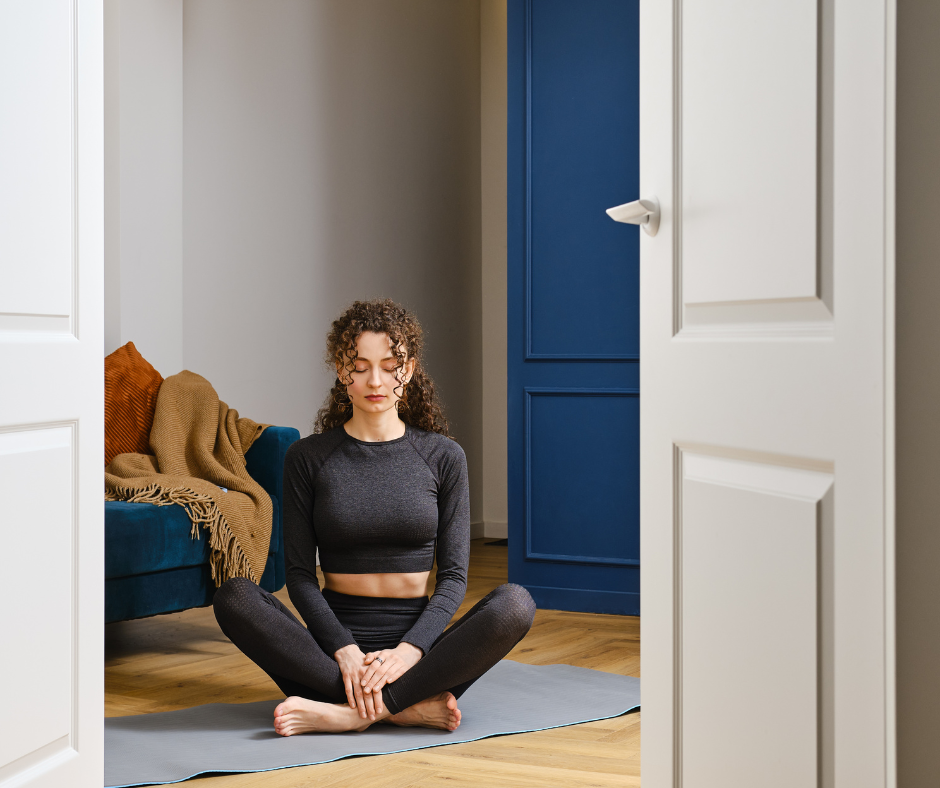In today’s fast-paced world, it’s easy to feel overwhelmed, anxious, or disconnected. Stressful workdays, endless notifications, and the pressures of daily life can make it difficult to stay centered and calm. Fortunately, one of the most effective tools to regain balance and calmness is also one of the simplest—your breath.
Breathing exercises are a powerful way to bring immediate relief to stress and anxiety while grounding yourself in the present moment. Whether you’re feeling frazzled in the middle of a workday or just need to wind down before bed, learning to control your breath can work wonders for your mental and emotional health.
In this article, we’ll explore the top breathing exercises that can help you stay calm, centered, and grounded, no matter how chaotic life gets.
Why Breathing Exercises Work
When you experience stress or anxiety, your body’s fight-or-flight response kicks in, leading to shallow and rapid breathing. This type of breathing can increase your heart rate and blood pressure, making it harder to focus and stay calm.
Breathing exercises work by activating the parasympathetic nervous system, which is responsible for calming the body. By consciously slowing your breath, you can reduce your heart rate, lower blood pressure, and promote a sense of calmness. Over time, practicing these exercises can help you better manage stressful situations and maintain a sense of inner peace.
1. Diaphragmatic Breathing (Belly Breathing)
Also known as deep breathing, diaphragmatic breathing is one of the easiest and most effective ways to calm your nervous system. By focusing on filling your lungs fully and engaging your diaphragm, this exercise can slow your heart rate and relax your muscles.
How to Practice:
- Sit or lie down in a comfortable position.
- Place one hand on your chest and the other on your belly.
- Take a deep breath in through your nose, allowing your belly to rise while keeping your chest still.
- Exhale slowly through your mouth, feeling your belly fall.
- Repeat for 5–10 minutes, focusing on the rise and fall of your abdomen.
Benefits:
Diaphragmatic breathing encourages deep oxygenation, reduces muscle tension, and can lower cortisol levels—the hormone responsible for stress.
2. Box Breathing (4-4-4-4 Technique)
Box breathing, also known as square breathing, is a simple technique that can be used anytime you need to regain focus or calm down quickly. This method helps regulate your breath while reducing feelings of anxiety.
How to Practice:
- Inhale deeply through your nose for 4 seconds.
- Hold your breath for 4 seconds.
- Exhale slowly through your mouth for 4 seconds.
- Hold again for 4 seconds.
- Repeat this cycle 4–6 times.
Benefits:
Box breathing can lower your heart rate, improve mental clarity, and reduce stress in moments of heightened anxiety. It’s especially useful during tense situations or before high-pressure meetings.

3. 4-7-8 Breathing Technique
Popularized by Dr. Andrew Weil, the 4-7-8 breathing technique is designed to calm your mind and prepare your body for rest. This method works by slowing down your heart rate and promoting relaxation.
How to Practice:
- Inhale through your nose for 4 seconds.
- Hold your breath for 7 seconds.
- Exhale slowly through your mouth for 8 seconds, making a whooshing sound.
- Repeat for 4–8 rounds.
Benefits:
This breathing exercise helps alleviate anxiety, reduce blood pressure, and can even promote better sleep when practiced before bed.
4. Alternate Nostril Breathing (Nadi Shodhana)
A popular technique in yoga and meditation, alternate nostril breathing helps balance the body’s energy and harmonizes the mind. This technique is particularly useful for reducing stress and anxiety while promoting focus and mental clarity.
How to Practice:
- Sit comfortably with your spine straight.
- Close your right nostril with your thumb and inhale deeply through your left nostril.
- Close your left nostril with your ring finger and release your right nostril.
- Exhale slowly through your right nostril.
- Inhale through your right nostril, then close it and exhale through your left nostril.
- Continue alternating nostrils for 5–10 minutes.
Benefits:
Alternate nostril breathing helps reduce stress, improve focus, and balance both hemispheres of the brain. It’s an excellent practice for grounding and centering yourself.
5. Equal Breathing (Sama Vritti)
Equal breathing, or Sama Vritti, is another yoga-inspired technique that involves inhaling and exhaling for the same amount of time. This method is simple yet effective at calming your mind and reducing stress.
How to Practice:
- Sit in a comfortable position with your eyes closed.
- Inhale deeply through your nose for a count of 4.
- Exhale slowly through your nose for a count of 4.
- Continue for 5–10 minutes, gradually increasing the length of your breaths to a count of 6 or 8 as you become more comfortable.
Benefits:
Equal breathing promotes mental clarity, reduces feelings of anxiety, and improves focus. It’s also a great way to enhance mindfulness and stay grounded in the present moment.
6. Resonant Breathing (Coherent Breathing)
Resonant breathing, also known as coherent breathing, involves breathing at a slow and steady pace to synchronize your heart rate with your breath. This technique can improve overall well-being and foster a deep sense of calm.
How to Practice:
- Inhale deeply through your nose for 5 seconds.
- Exhale slowly through your mouth for 5 seconds.
- Continue this pattern for 10–20 minutes.
Benefits:
Resonant breathing enhances emotional regulation, improves heart health, and reduces stress. It’s an excellent practice for maintaining long-term calmness and balance.
Final Thoughts
Breathing exercises are simple yet powerful tools for staying calm and grounded, no matter the challenges life throws your way. Whether you’re dealing with chronic stress, anxiety, or just need a moment to reset, these techniques can provide immediate relief. The key is consistency—by practicing these exercises regularly, you can train your mind and body to respond to stress with grace and ease.
So, take a moment today to pause, breathe deeply, and reconnect with your inner calm. With a few mindful breaths, you’ll be amazed at how much more centered and grounded you feel.




